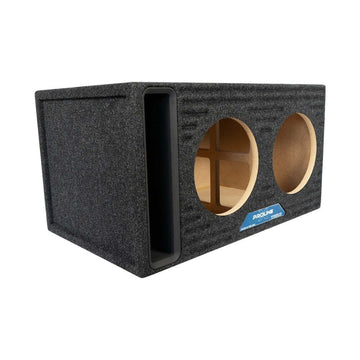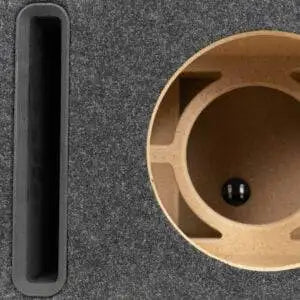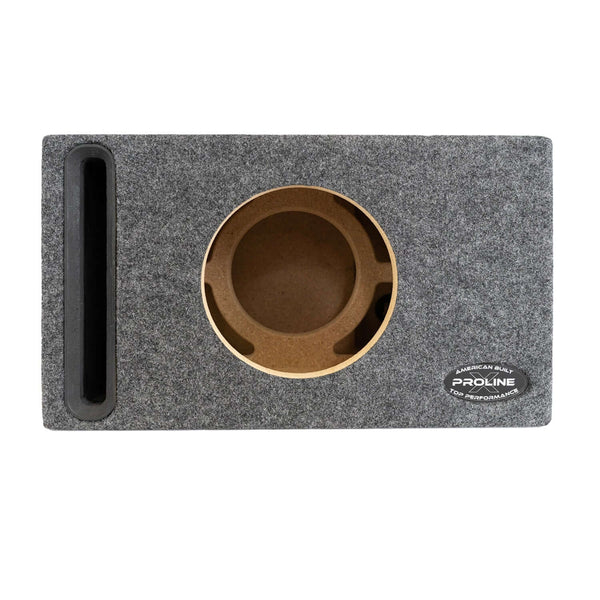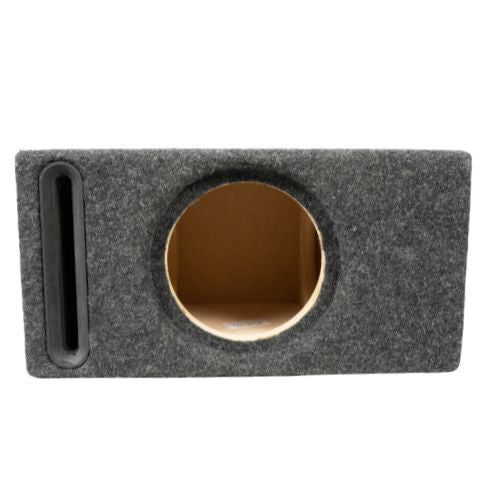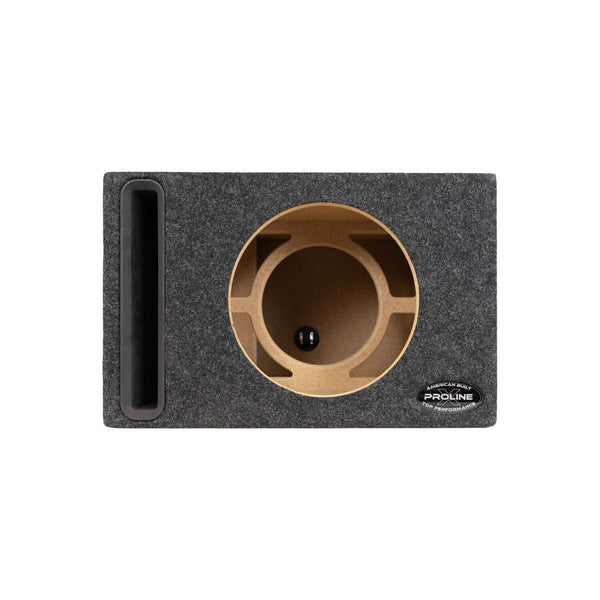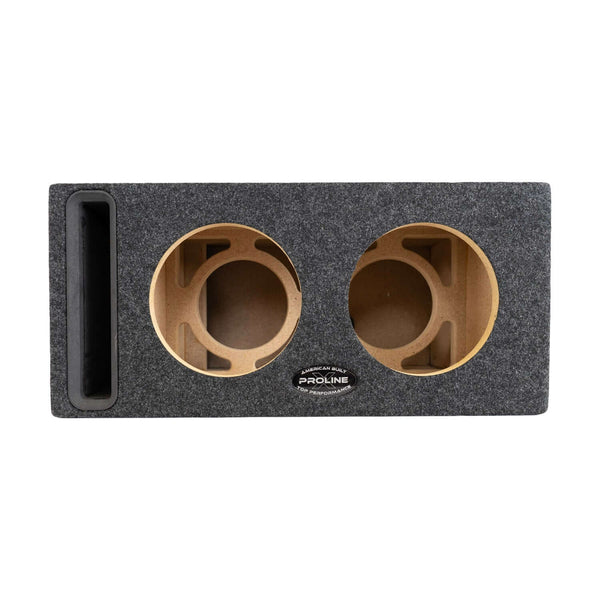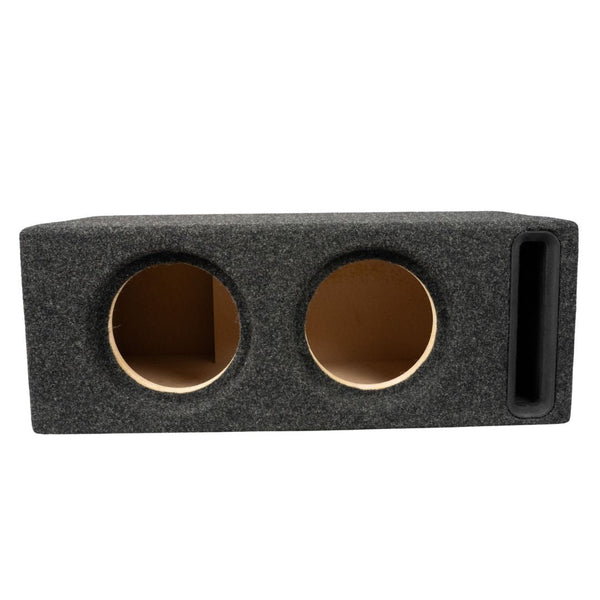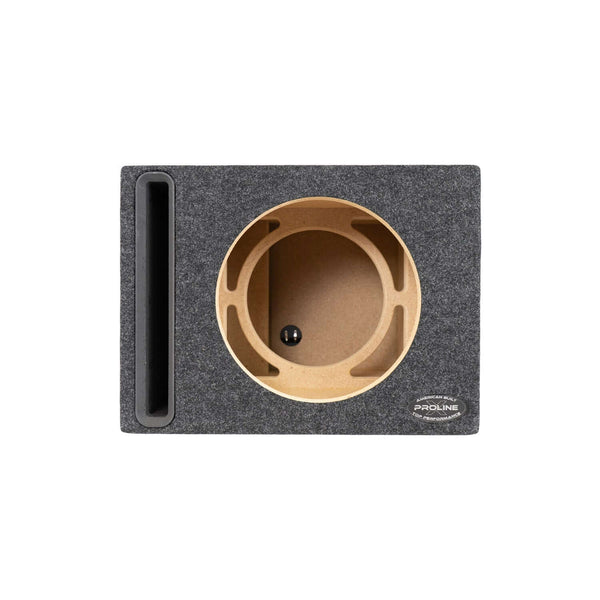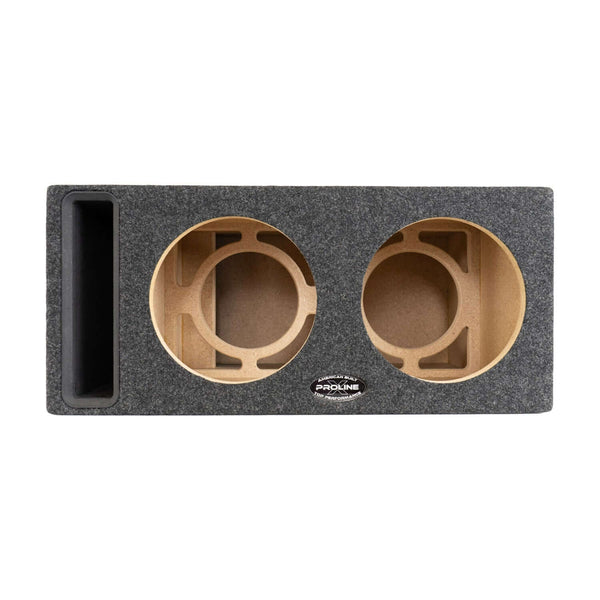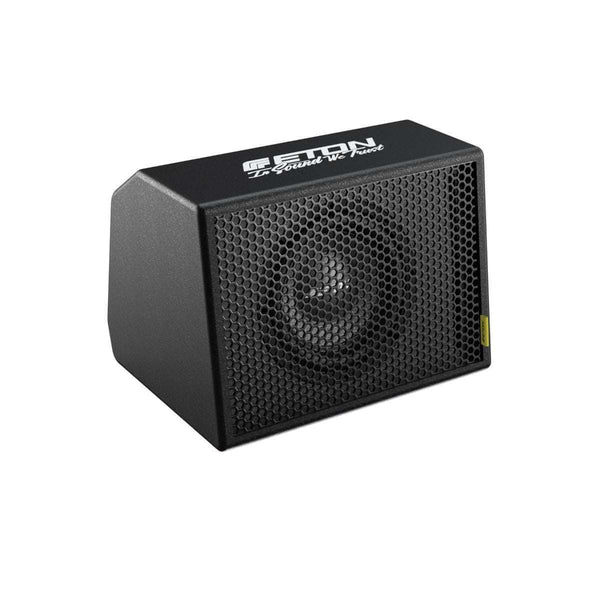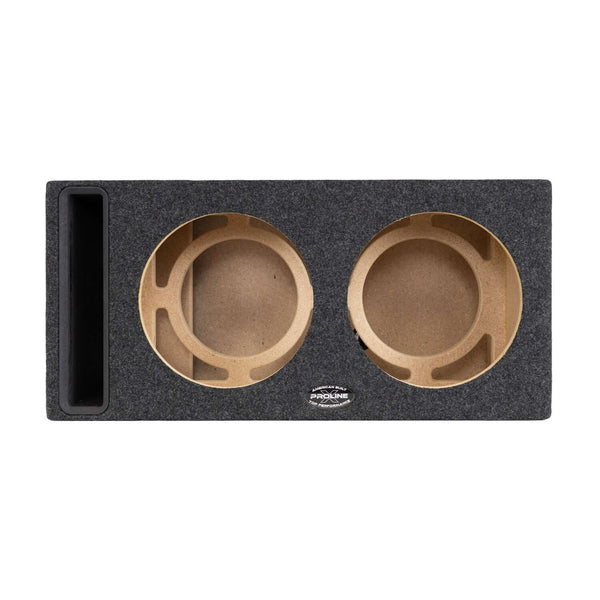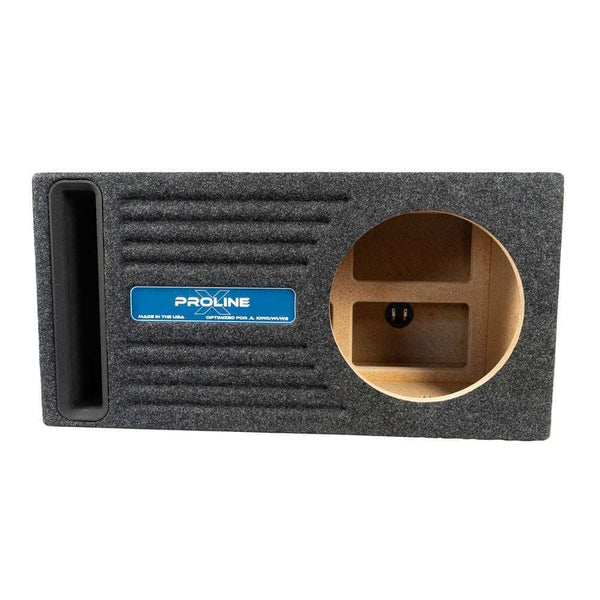All About Ported Subwoofer Boxes
Ported subwoofer boxes, also known as vented enclosures, are popular among audio enthusiasts seeking a deep, powerful, louder bass experience. These enclosures are available in both large and small sizes, with small ported enclosures offering tighter bass response but potentially less low-frequency output compared to larger ones. Unlike sealed enclosures, ported boxes use a strategically designed vent or port area to enhance the overall output, allowing the subwoofer speaker to move more air and produce a richer, fuller sound. In this guide, we’ll explore what makes ported subwoofer boxes a go-to option for car audio systems, discuss recommended specifications and best practices for optimal performance, how they work, and why they might be the right choice for your setup. Additionally, speakers can be installed in various ways within ported enclosures, offering flexibility in mounting options to suit different vehicle layouts and sound preferences.
How Ported Subwoofer Boxes Work
Ported subwoofer boxes operate on a simple yet effective principle—enhancing the movement of air to produce louder and deeper bass. The port area, usually a cylindrical or rectangular opening, allows air to flow in and out of the enclosure as the subwoofer cone moves. This airflow reduces the resistance the subwoofer has to work against, allowing it to operate more efficiently and produce greater volume with the same power. Essentially, the port is tuned to a specific frequency range, meaning it can amplify bass output at those lower frequencies, resulting in a more pronounced low-end response.
The tuning of a ported box is a critical aspect that sets it apart. Manufacturers can fine-tune the box by adjusting the port’s dimensions and the enclosure’s internal volume to emphasize specific bass frequencies. There is a key point at which the enclosure volume and design are optimized, ensuring the subwoofer's movement is protected and its performance is maximized. This creates the characteristic “boom” that ported boxes are known for. While they are not necessarily superior to sealed boxes in every aspect, they are ideal for users who want to maximize the loudness of their subwoofer, especially in genres such as hip-hop, EDM, and rock.
Advantages of Ported Subwoofer Boxes
One of the most significant advantages of a ported subwoofer box is its efficiency. Ported enclosures require less power to produce the same volume as a sealed enclosure. This makes them an excellent option if you want to make the most out of a smaller amplifier or prefer high output without putting too much strain on your audio equipment. The design also allows the subwoofer to produce lower frequencies more effectively, giving you a richer sound profile and a more immersive listening experience.
Another significant advantage is the added “punch” that ported boxes provide. This punch results from the boosted lower frequencies, which many people find more enjoyable for specific types of music. The deep, resonant sound produced by a ported box can fill a vehicle more effectively, making it an attractive option for those who enjoy a powerful, visceral bass experience. Additionally, ported enclosures are often more forgiving in terms of installation—they can deliver good performance even when not perfectly positioned, which can be a challenge with sealed boxes. Ported subwoofer boxes are generally easy to install, making the installation process straightforward and accessible for most users. With an easy fit and minimal effort required, you can quickly install your subwoofer enclosure and enjoy optimal sound quality.
Tuning and Customization
One of the unique aspects of ported subwoofer boxes is their tunability. The port’s tuning frequency determines which bass frequencies are amplified and can be adjusted by changing the port’s dimensions or altering the box’s internal volume. It is recommended to follow tuning parameters or best practices provided by manufacturers or experts to achieve optimal sound quality and protect your speaker. This means you can customize your listening experience to match your preferences. For example, if you like punchy mid-bass, the port can be tuned to a higher frequency, whereas a lower tuning frequency will deliver the desired results if you prefer deep bass.
Custom-built ported boxes are popular for enthusiasts who want to take full advantage of their specific subwoofer characteristics. By tailoring the enclosure to match the specs of the subwoofer, you can maximize its performance and ensure that it delivers the best possible sound quality. Factors such as box material, port shape, and box volume all come into play, and a well-tuned ported box can make a noticeable difference in the overall listening experience.
Ported vs. Sealed Enclosures
A common question when discussing subwoofer boxes is whether to choose a ported or sealed enclosure. The answer largely depends on your listening preferences and the type of vehicle you have. Ported enclosures are best for those who love loud, booming bass and are willing to sacrifice a bit of tightness and precision for raw power. Sealed boxes, on the other hand, provide a more accurate and controlled bass response, which is ideal for audiophiles who value sound quality over sheer volume.
Ported boxes also tend to be larger than sealed ones, which requires more space in your vehicle. Small sealed enclosures are often chosen for limited space, offering tight bass in a compact form. Small ported enclosures can also be effective in certain setups, balancing space constraints with enhanced output. A sealed enclosure might be the better choice if you have limited room or prefer a more compact setup. However, if you aim for maximum output and have the space to accommodate it, a ported box can provide an unmatched bass impact that will make your music come alive.
Installation Considerations
A proper install of your ported subwoofer box is essential for achieving optimal sound quality and preventing potential damage to your equipment.
Installing a ported subwoofer box requires careful consideration of several factors to achieve the best possible sound. The placement of the box within the vehicle can significantly impact its performance. Ideally, the port should be positioned in a way that allows it to interact with the vehicle’s acoustics—for example, facing the trunk or a rear corner to help amplify the bass waves. Proper bracing and sealing of the box are also crucial to prevent unwanted vibrations or air leaks, which can negatively affect sound quality.
Power Handling in Ported Subwoofer Boxes
Another important consideration is power handling. Since ported enclosures are more efficient, they can often achieve high output with less power, but it's still essential to match your amplifier and subwoofer correctly. An appropriate gauge amp kit ensures that your system receives the proper power flow. Overpowering a subwoofer in a ported box can lead to distortion and even damage, so make sure your system is configured correctly to avoid these issues.
(MDF) Medium Density Fiberboard Construction
Most high-quality ported subwoofer boxes are constructed from medium density fiberboard (MDF). MDF is preferred because of its density and rigidity, which help reduce unwanted vibrations and resonance. This means the sub box will contribute to a cleaner, more precise bass output. Medium-density fiberboard construction ensures that the box maintains its integrity over time, even under the intense pressure created by a powerful sub.
Common Myths About Ported Sub Boxes
There are a few misconceptions about ported subwoofer boxes that are worth addressing. One common myth is that ported boxes always sound “boomy” or lack definition. While it’s true that ported enclosures emphasize lower frequencies, a well-designed ported box can still produce clean, articulate bass that is enjoyable across a wide range of music genres. The key is proper tuning and matching the box to the subwoofer.
Another myth is that ported boxes are only suitable for large vehicles or massive subwoofers. In reality, ported enclosures come in all shapes and sizes, and they can be just as effective in smaller cars as they are in larger vehicles. Speakers can be mounted in various configurations, such as in the rear seat tray or facing different directions, to optimize sound quality and space. The important thing is to select the right size and design for your specific setup, which can often be achieved with the help of a knowledgeable audio specialist. For those with limited space, a dual subwoofer enclosure can be a practical solution to achieve powerful bass while saving space.
Is a Ported Subwoofer Box Right for You?
Ultimately, choosing a ported subwoofer box comes down to your personal preferences and listening goals. If you love feeling the bass as much as hearing it, and you want to maximize your subwoofer’s output, then a ported enclosure is a fantastic choice. It offers louder, deeper bass that can transform your listening experience, especially if you enjoy genres of music that rely heavily on lower frequencies.
However, remember that ported boxes require more space and careful installation to achieve their full potential. If you have the room in your vehicle and are willing to spend some time installing, a ported subwoofer box can deliver the kind of powerful, resonant bass that makes your music come alive. Whether you’re an audio enthusiast or want more impact from your car stereo, a well-designed ported subwoofer box is a great way to enhance your system.
Consider all the accessories you might need for a successful installation, such as an appropriate gauge amp kit, mounting hardware, and additional wiring. Also, factor in the available airspace in your vehicle to ensure the ported sub box fits perfectly. We offer shipping throughout the USA, so wherever you are, you can get the perfect enclosure to take your car’s sound system to the next level.
Many customers keep coming back thanks to their satisfaction with our products and service. Thanks for trusting us with your audio needs and for your positive feedback!
